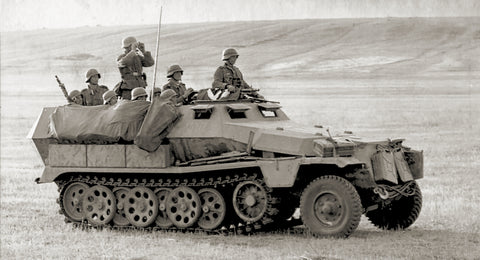
Half Truck, Half Tank, the German Sd.Kfz 251 Was Wholly Successful
German action in the 1930s Spanish Civil War showed Wehrmacht general Heinz Guderian that his country’s tanks were vulnerable to enemy attack in forests, urban areas, and other tight settings, making them ineffective tools for tactical troop support. This convinced him to develop an armored infantry transport vehicle—a sign of his penchant for mechanized warfare to come. Half-truck, half-tank, the Sd.Kfz. 251, introduced in 1939, was designed to be fast, able to navigate a variety of rough terrains, and inexpensive to produce.
An impressively adaptable beast, the 251 spawned nearly two dozen official variants. The model depicted here, the 251/1 (Ausf. C), performed as a basic personnel carrier, most often ferrying a panzergrenadier squad of 10 men; the 251/6 was a communications base for senior command, typically also carrying a famed “Engima” machine; the 251/8 served as a mobile armored field hospital, while the 251/16 worked as a flamethrower. Like many German tactical weapons of the war, most 251 half-tracks were scrapped after 1945.
